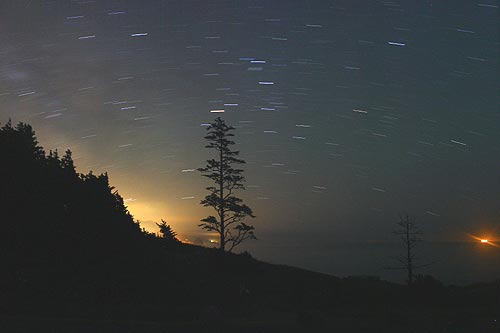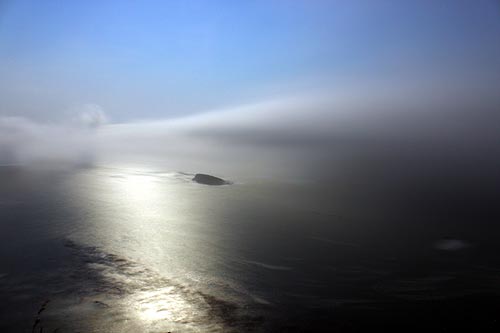 |
Updated: Oregon, Coast, Portland Astronomy: Space Station, Planets
Published 05/26/2015 at 7:41 PM PDT -Updated 05/27/2015 at 3:41 PM PDT
By Oregon Coast Beach Connection staff

(Oregon Coast) – There will be a lot to see in the clearer night skies of late spring and early summer throughout northwest and the coast. June is fairly full of stellar interstellar sights – both for the casual viewer and the more hardcore amateur astronomer. The Strawberry Moon, good glimpses of Venus, a decent helping of Mercury and an incredible pairing of Venus and Jupiter – along with more views of the International Space Station.
From now through the middle of June, the ISS will be visible quite often above Portland, northwest Oregon and much of the coastline. The station is currently approaching full illumination, which means more and more sightings, until they seriously climax on June 1.
In the wee hours of May 31, you can spot it five times: at 12:34 a.m., 2:11, 3:47 a.m., and then at night at 10:04 p.m. and 11:40 p.m. These are all for about five to six minutes.
Continuing the astronomical fun into June 1, you can see the ISS at 1:18 a.m., 2:54 and 4:30, while that night it appears at 10:47 p.m. The long sighting times continue through June 5, when the length of visibility starts to decrease to two or three minutes after that.
On June 2 Portland and the Oregon coast have a full moon. It was known by early native Americans as the Full Strawberry Moon, but it's also been called the Full Honey Moon and the Full Rose Moon. Hit Oregon coast beaches at night for some impressive sights, especially if the moon is at a place where it's reflected on the water (see the photo below).
The Summer Solstice is on June 21, where the North Pole is pointed towards the sun. It's the longest day of the year. On the Oregon coast, it may seem a tad longer. Sunset there happens about seven minutes later than inland.
Come June 16 this part of the Pacific Northwest will have the darkest skies of the month, with the advent of the new moon. If skies are clear about this time along the coast, you can get some incredible photos of the rest of the galaxy, other stars and constellations. Star clusters will stand out beautifully. The hitch, of course, is clouds or mist. But when things are opened up along these beaches, the rest of outer space around us is vivid and remarkable.
Venus and Mercury will make a splash above us. About June 6 is the best time to see Venus as it will be high in the early evening sky, just after sunset. Mercury will be no shirker, either, but you'll have to be quick to catch it. On June 24, it will be at its highest point in the morning sky, lurking in the east, not far from the horizon just before sunrise.
On July 1, look for the “race between Jupiter and Venus,” as some astronomers call it. The two will be extremely close in the western sky, just after sunset – as close as .03 degrees apart. But publication EarthSky.org said the two bright worlds will be showing up on any night in June, looking bright and resplendent.
“At that time - especially on the nights of June 30 and July 1 - you can witness the closest Venus-Jupiter conjunction until August 27, 2016,” the publication said. “These very bright worlds will be hard to miss (unless it’s cloudy!) because Venus and Jupiter rank as the third-brightest and fourth-brightest celestial bodies, respectively, after the sun and moon.” More Oregon coast science here.

Above: moonlight on the ocean, near Depoe Bay




More About Oregon Coast hotels, lodging.....
More About Oregon Coast Restaurants, Dining.....
LATEST Related Oregon Coast Articles
Oregon Coast, Valley and Likely Washington Coast to Get Some Aurora Borealis ... |
Back to Oregon Coast
Contact Advertise on BeachConnection.net
All Content, unless otherwise attributed, copyright BeachConnection.net Unauthorized use or publication is not permitted
Secrets of the Season |
Unusual Travel Articles TravelParanormal.com allows you to submit your own creepy tale or debunk one - or see up-to-the-minute news headlines about travel and the paranormal. News Headlines from All Over Oregon Need to scan Oregon headlines? Constantly updated news from all over Oregon: a comprehensive, up-to-the-minute display of news headlines from a variety of media Oregon Coast Oceanfront Lodging, Hotels, Rentals |







































